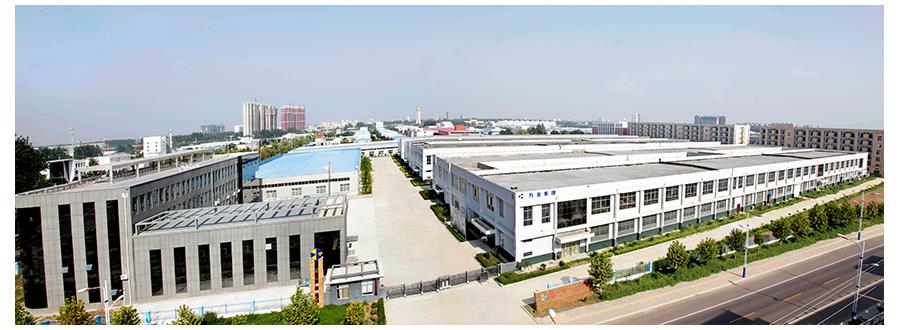Brief Introduction
Low temperature electroplating, pregnant soil diamond geological drill bit has been widely applied in China's land and resources department. Practice has proved that this type of drill bit adapts to strata width, high aging, long life, and low cost, but it is widely used in large-diameter and large-area oil fields. In the past two years, these drills were mainly used in the Zhangdian mining area in Henan Nanyang Oilfield and the hard stratum in the Anpeng mining area. They were obtained through the use of nearly 200 8. 5" electroplated diamonds. The ideal economic index. Compared with the conventional cylindrical polycrystalline diamond, triangular polycrystalline diamond bits and sintered impregnated diamond coring bits, the average single-tube coring footage has been increased from the original 4.20 m/barrel to 7.62 m. The average coring rate was increased from 0. 21 m/h to 0, 84 m/h. According to the statistics of 14 wells in Nanyang Oilfield in 1999, the drilling cost was saved by 3,72 thousand, and Greatly reduce the labor intensity of drilling workers. Now we discuss the development and application of drills as follows.
I bit manufacturing principle
The production principle of low-temperature electroplating impregnated diamond oil coring bit is to use the metal ions in the electroplating solution to move to the cathode (the electrode that suspends the drill bit steel body) under the action of the electric field force, reductively deposits as metal, wraps diamond and steel. The formation of pregnant diamond inlaid diamond oil coring bit.
In the carcass metal or deposited coatings of electroplated impregnated diamond drill bits, the present author chose to use nickel as the matrix component, that is, electroplating impregnated diamond bits using a method of nickel plating, because nickel has a good need for rock drilling Mechanical properties. The term “low temperature” as used here refers to the temperature of oil drills manufactured by dip method. Relatively low temperature plating electroplated diamond oil drill bit is room temperature for most of the year. It is only heated properly in cold seasons. In summer, or during the hot summer, it is appropriate to cool down. The “plating” “common name” here is not exact. It should be electroformed, because the plating is generally very thin, and the author developed the diamond oil drill bit (or working layer) The thickness is generally in the range of __ or even up to 10 mm, and the inside diameter and outside diameter of the drill bit are controlled by the mold, so it is equivalent to casting.
2 bit manufacturing process
The proper design of the size and shape of the electroplated pre-prepared diamond geological coring bit is an important basis for the quality of the drill bit, while the manufacturing process
The strict control of the order is the quality of the drill bit.
2.1 drill steel body and mold
Finishing practice has proved that the surface of the drill steel body plated is too smooth not only economically uneconomical, but also unreasonable at the same time. Because the electroplating drill bit - an important quality indicator is the bonding strength. The surface to be plated is appropriately roughened to help the coating Solid connection with the steel body. This area increases the area of the joint. At the same time, due to the microscopic and even macroscopic unevenness of the surface of the part, the mutual engagement with the plating layer is caused. This resists the drill bit from declining along the steel body due to the torsional moment. It is helpful. Therefore • The surface of the steel body plated is machined on a lathe and there is no need for a finisher. Of course, the rough surface requires more care for oil removal and oxide film. It is more difficult to remove dirt from the gully. At the same time it should also be noted that it is difficult to deposit metal ions in the trenches. Therefore, it is necessary to increase the polarization of the plating and improve the deep-plating ability, in order to truly bond the metal plating in the valley rather than false bonding or not combined.
2.1.2 Water outlets The nozzles on the steel body should be machined first. This is convenient. It can also be electroplated and then processed. However, this is troublesome. The edge of the nozzle groove should be processed into a circular arc or chamfer. Plating should be carried out on each side of the coating or on each of the five faces of each steel segment rather than on three sides. This not only avoids tip discharge during plating, but also increases the bond strength between the coating and the steel body. The ability of the coating to resist the impact at the bottom of the hole. Number of nozzles • Arrangements of 12.5" inset geology coring bit. Better results.
Impregnated diamond drill bit wear in drilling. Due to poor cooling, the diamond is burned or micro-burned, resulting in carbonization of diamond damage is consumed, the other is the carcass wear and the diamond out of too much and fall off. Therefore. The cooling of the diamond bit, especially the cooling of the bottom lip surface. With the consumption of the diamond layer in the use of the bit, that is, the depth of the end surface nozzle should be continuously processed to maintain a certain depth of the nozzle along the end surface. The nozzle groove is preferably machined into a chute along the flow direction of the coolant.
2.1.3 chamfering and gauging the surface of the plated steel body along the inner diameter of the ball, suitable for R5 mm. The chamfering angle is too small or even without chamfering or chamfering. The shape is not good. The former affects the life of the drill bit. When the diamond at the bottom lip of the drill bit and the inner and outer diameters can continue to drill, the steel body is exposed first because the chamfering of the steel body is too small or even without chamfering. The latter cannot be drilled. Although the latter does not appear to be exposed first at the chamfered steel body, it does not have a good effect on the inner and outer diameters, because it reduces the height of the inner and outer diameters. Therefore, the bit life is also affected.
The problem of internal and external diameters of the diamond-plated, pregnant, inlayed, diamond-bearing geological drill bit • The author has solved the problem by combining single-crystal and polycrystalline grain-preserving measures. The effect is very good. It should be noted that the design of the gauge thickness is very heavy.
The size of the gauge diameter should be set to maintain the drill so that the diamond layer in the bottom of the crucible is completely depleted. The ideal match is to use both the diamond on the bottom lip and the diamond on the inner and outer diameters at the same time. This will make full use of The diamond. Diameter of the gauge is controlled by the mold.
2.1.4 Mold As the author uses the bottom lip surface, the inner surface, the outer surface of a surface at the same time the growth of a molding process. Therefore, strict requirements on the mold. It can be said that the internal and external dimensions of the drill bit accuracy is completely determined by the mold processing accuracy. There are two functions: one is to control the size of the cutting edge inside and outside the drill. The other is to keep the diamond. The mold of the mold can be made of plexiglass, plastic, or other insulating material.
The mold is divided into inner and outer molds. The inner diameter of the inner mold controls the inside diameter of the drill bit such as 8. 5" oil core drill bit outside diameter <f'2in. 9 mm).
2.2 bit steel body before plating
Plating impregnated diamond oil coring bit. Because the coating is working in the harsh environment at the bottom of the hole, whether the bond between the coating and the drill body is solid has become an important quality index to measure the quality of the impregnated diamond drill bit. Therefore, the steel body plating The pre-treatment should be said to be a very important link, it is directly related to the combination of the coating and the drill body and the quality of the coating.
After the drill steel body has been machined, there is inevitably oil. This is mainly mineral oil such as engine oil and diesel oil. In addition, the steel body touched by hand is also easy to be affected because the exudates in the human hand contain grease. Animal oil, vegetable oil contamination. Visible, no matter what kind of oil. It must be completely cleaned before plating.
Organic solvent deoiling organic solvent can better dissolve mineral oil and animal and vegetable oils. This method of degreasing is characterized by faster degreasing speed and no corrosion to metal. The so-called organic solvent degreasing is to clean with gasoline. Of course, it can be washed with kerosene or acetone. However, it is easier to clean it with gasoline. However, it is necessary to completely remove the oil on the surface of the parts. It is not enough to wash with gasoline. Because the organic solvent adhered to the surface of the part volatilizes, The oil stains left behind are left on the metal surface. After degreasing with organic solvents, oil must be removed by other methods.
2.2.2 Chemical Degreasing This method of degreasing is carried out by the action of saponification and emulsification. The former can remove animal and vegetable oils (saponified oils); the latter can remove mineral oils (unsaponified oils). Chemical degreasing The solution composition is generally selected as follows: Sodium carbonate < Ka" C (
~60 g/L: sodium silicate (Na, SiOl). 4 ~ 6 g/L; sodium hydroxide (MaOH), 6 ~ 8 g/U at a temperature of fiO ~ U). I: Time is around I h.
The removal of animal and vegetable oils in oils is based on the saponification reaction. The so-called saponification reaction is the chemical reaction of oils and alkalis in chemical degreasing solutions.
Related Products













